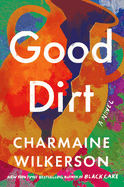
Charmaine Wilkerson's powerful second novel, Good Dirt, explores the lasting effects of a long-ago tragedy and its connection to a beloved family heirloom. Through the history of the Freeman family and the provenance of a handmade pottery jar affectionately known as "Old Mo," Wilkerson (Black Cake) considers family secrets, race and respectability politics, the long-term nature of childhood trauma, and the complexity of American history.
On an autumn day in 2000, two armed burglars break into the Freemans' house to find the children, Baz and Ebby, at home unexpectedly. The encounter results in Baz's murder; Old Mo is shattered into fragments, and 10-year-old Ebby experiences a trauma that will haunt her for the rest of her life. Wilkerson continues her narrative years later with a different kind of tragedy, as Ebby's wealthy white fiancé, Henry, fails to show up for their wedding.
Ebby begins to ask questions about Old Mo and the circumstances of its attempted theft, as she reckons with the pain Henry caused her and the lingering trauma from Baz's death. The jar, made under enslavement, holds more history than even Ebby can guess, and Wilkerson reaches back a few centuries to excavate some of that history through the stories of skilled potter Moses, his brother-in-law, Willis, and their descendants.
Wilkerson probes the layers of each family member's connection to the jar; their deep love for one another and fierce pride in their heritage; and the guilt they carry, logical or not, relating to Baz's death. Layered and complex, Wilkerson's novel brilliantly sculpts a story of quiet resistance, skilled craftsmanship, and dedication to family and freedom. --Katie Noah Gibson, blogger at Cakes, Tea and Dreams

